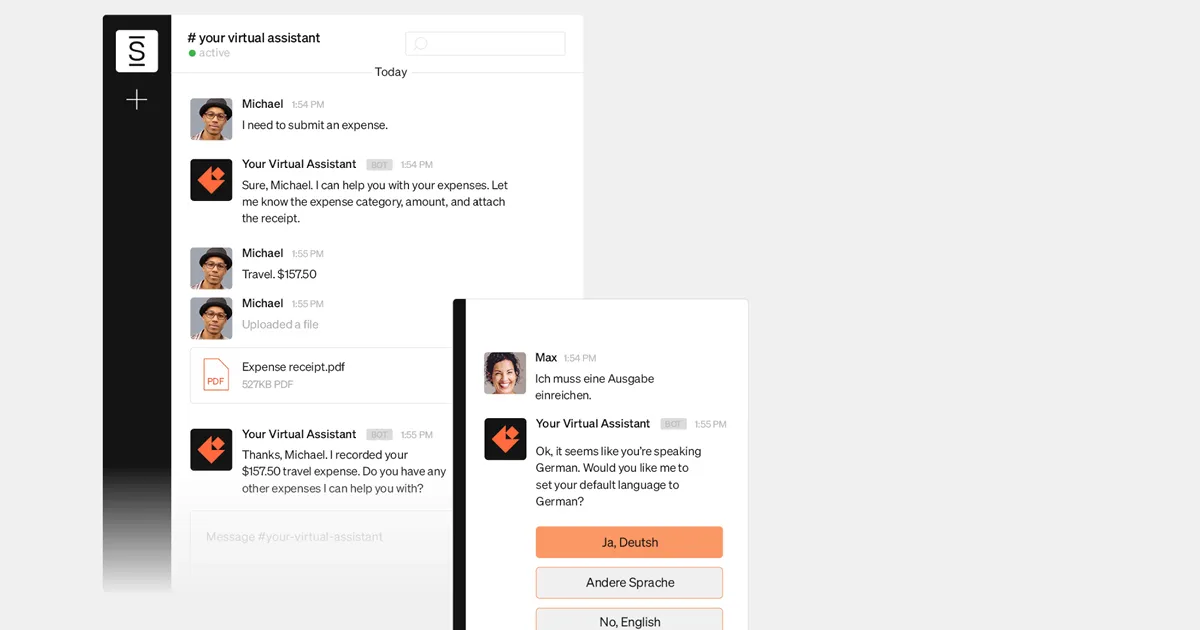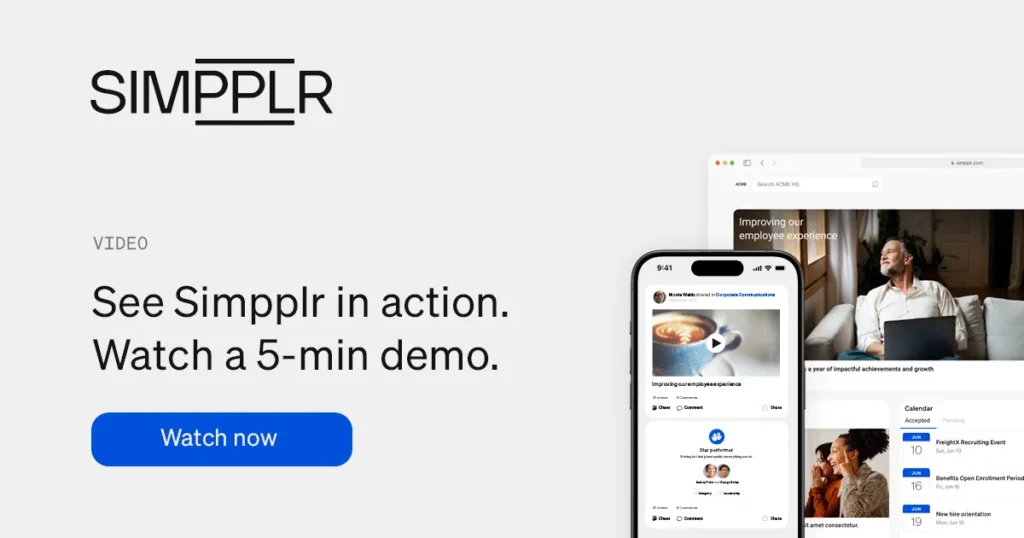What is an Intranet? It’s a powerful tool used within organizations to facilitate, support and improve internal communication and collaboration. But it goes well beyond that, and you’ll want to take inventory of your intranet’s capabilities to ensure its offering everything it can be!
An intranet should be a tailored technological solution allowing employees to securely connect, whether they’re collaborating on a project, sharing knowledge, networking internally, or enjoying a virtual coffee break with co-workers. An intranet serves as the heart of a company when done right, which we will help you take stock of below.
A brief history
Intranets have been around since the 1990s and are enjoying a renaissance now that the work from home (WFH) culture has taken root and flourished. The remote workplace model has many advantages, but keeping employees connected, informed and included can be problematic.
And when the global business sector shut down during the Covid 19 pandemic, these problems snowballed. Overnight, the concept of an intranet became the talk of tech spaces and companies around the world. Now, in 2023, leading businesses are maintaining a competitive edge by developing intranets to give employees optimal resources to connect, communicate, and collaborate.
Intranets sound amazing, don’t they? But how do we get hold of one? Can we make one ourselves? Absolutely yes—but you want to start from a solid basis, not build one from scratch. And you do this by defining goals, gathering a team, and choosing the right platform, and then you’re part of the way there. Then you need to find a SaaS option that’s simple to launch and maintain.

When you have that powerful, unique tool that meets the specific needs of your organization, it’s much less daunting. And when following tried and true steps and guidance, it’s a straightforward process. So, let’s get to work and walk you through the process one must take to implement a successful intranet company-wide.
Step 1: Define Your Goals and Objectives
Before you get down to the business of implementing your intranet, it’s important to have a clear understanding of what you want to achieve. You’ll need to identify the specific goals and objectives of your intranet, such as improving communication and collaboration among employees or providing frictionless access to company resources and information. Defining goals and objectives will ensure that your intranet is tailored to the specific needs of your company.
Step 2: Identify content inventory
The intranet should be the primary hub of information in your company. While it’s all about work, it’s important to include areas for social contact. Think carefully about what you need to accommodate, consult your co-workers, encourage contributions, and make a list of ideas. Don’t wait for your intranet to be ready before you do this.
Start building information as soon as possible and add more as the system develops. Keep asking for ideas and feedback through all levels of the organization. This way, employees will feel invested in the birth of a collaborative resource. They’ll anticipate its launch, and be keen to engage in the content when it’s functional.

Step 3: Choose the system
Most intranets are out of the box, and what’s right for one company may not be right for another. Also, intranet tech moves fast. A 2020 system, for example, that was highly recommended three years ago might already be outdated for what you need. Given this, how do you decide?
You’ll need a system that fulfills company needs now and also into the future—a platform that keeps pace with tech as it evolves. It must suit your budget and be compatible with the skills and capabilities of the IT department. Apart from requesting a demo from a leading AI-driven intranet supplier, here are some suggestions to point you in the right direction:
- Make sure the intranet system you choose has two-way communication. Some intranets are top-down only and used for distributing information rather than enabling collaborative employee interaction.
- Effortless user experience (UX) is vital, so ensure the interface is usable and user-friendly. If it’s hard to use, it won’t get used.
- Go for a product with a fast, smooth roll-out. Choose an easily implementable cloud-based system.
- The system must integrate with tools currently in use. If your new intranet isn’t seamlessly compatible with for example Google Workspace or Microsoft 365, you will have a problem.
- The intranet should be designed to reflect your brand. Be sure that it highlights the company mission and maintains employee alignment with core goals and values.
- In 2023, it’s unthinkable that your intranet wouldn’t be accessible by mobile phone.
- Be absolutely sure that your system is guaranteed certified and compliant
Step 4: Gather your team
Implementing an intranet is a team effort, so it’s essential to gather the right people to help. This might include IT staff, representatives from different departments, and key stakeholders in your company. Pick a diverse group to capture the best ideas, and don’t forget to include remote workers. Together, you can work to identify the specific needs of your organization and how the intranet can meet those needs.
Step 5: Choose your platform
There are a variety of options when it comes to building an intranet, from using off-the-shelf solutions to custom-building your own. Again, consider the specific needs of your organization, as well as your budget, when choosing a platform, and get the IT department on board. Some popular options include SharePoint, Drupal, and WordPress, all of which have been around for 20 years or more.
Step 6: Populating content
This is one of the most important steps toward creating an effective intranet. It’s all very well to have a shiny new intranet, but if it’s empty, nobody will come.
Before you start, discuss how content will be added or transferred to the new system, and be sure you have the correct tools and support to do this. This can be done manually, but it is slow because you will need to format and organize as you go. Ensure your platform offers upload strength that automatically integrates with other services.
Because an intranet requires the creation, publication, and management of fresh, engaging, relevant content, a content strategy is essential. This will make your intranet as useful as possible. Contributors will know how to create content, and they’ll also know what the publication standards are, and what to do with outdated content. Better still, when your intranet has auto-governance capabilities, cleanup of old content is simple and fast.
Reading content in a digital workspace differs from reading hard copy, of course. People tend to be busy and use a quick scan and scroll method to absorb information. Capture their attention by making information easy to find with aa visual branding that’s clean and makes sense.

- Group content by subject rather than user, and review and refresh regularly to draw attention and engage the reader.
- Have an eye-catching title, a summary, and short, easy-to-read paragraphs with helpful links.
- Add visual appeal with authentic photos (rather than stock images), infographics and short videos.
- Remember to use language everyone can understand because jargon and too many abbreviations don’t always resonate.
Employee engagement is crucial, so keep your intranet lively. Use the word ‘you’ to address readers directly and encourage dialogue by making sure visitors can interact with content through comments or feedback. Aim for a vibrant, clutter-free hub for maximum user engagement.
Step 7: Level up your intranet capabilities
Once you have chosen your team and a suitable platform, and given serious thought to creating and managing content, it’s time to start implementing your intranet. This includes designing the layout and the ongoing process of creating content and adding features according to needs.
There is no single approach to designing an intranet, but remember, its prime function is to make it as easy as possible for employees to locate what’s necessary to get their work done. This is a good reason to find out what they require, so do your research and involve them in the design process.
It’s worth noting that intranet design has a huge impact on whether employees will engage or not. If it’s clunky and cluttered, it won’t be used.
- Start with a visually appealing, colorful, clear, easily navigable homepage (see more about the importance of a stellar homepage in Step 8 below). Continue the visual appeal throughout the layout and make this compatible with the company style and brand.
- Make sure the correct tools are available for employees’ everyday work needs and include an excellent search function.
- Incorporate an easy-to-find area for corporate communications and pop-ups for critical issues.
- As well as accessible document libraries, upload real-time copies of workplace policy documents and the company handbook.
- An employee directory with detailed profiles is a great way for people to know who’s who, and who does what.
- Set up a section where diversity, equity and inclusion can be promoted.
- Include discussion boards, offer surveys to assess feedback, and create a list of FAQs.
- Provide space for local news and announcements.
- Employees feel valued if they are recognized for star performance, so have a place to celebrate progress and success.
- Create a comprehensive calendar of company events and special occasions.
- Allocate an area to well-being and work-life balance issues.
- Offer an onboarding space to enhance the employee experience for the new recruit and give them an opportunity to get ahead on company culture and policy.
- Create an HR self-service section where employees can manage their own data, and a job vacancy section.
- Pay careful attention to security and backups.
Of all the features available for your intranet, choose the most relevant to your company and those that will interest and engage co-workers and enrich company culture. You can always add something or take it away – and you should.
While it’s a work tool, the intranet also allows space for social interaction and a bit of fun.
- Why not use it to promote something new and tasty at the on-site cafeteria or in the surrounding community?
- How about an area where people can share interests like writing poetry, breeding Japanese Bobtails, or millinery?
- Or maybe run a competition to find a name for your intranet? You can put it to a vote and celebrate the winner.
Lastly, be sure to test your intranet throughout the process to ensure that it meets the needs of your organization and functions as required.
Step 8: The all-important homepage
The homepage is the enticing shop window for your intranet. Given that first impressions count, it needs to be great. Apart from being visually stunning, it must provide fast, easy access to what users need most, including applications and tools they use every day.

Communication areas should be clear, with critical communications highlighted. Also useful are statistics and performance at a glance and seamless access to required resources. So, keep it simple with:
- Basic applications, tools, and links to get work done
- Areas to access what’s happening in the company
- Abilities to learn about and engage with others
Step 9: Launch and maintain your intranet
Finally, it’s time to launch your intranet within your organization. It’s important to make time to introduce co-workers to the new intranet, even if they have contributed to its design and content. Provide training and support to help them navigate and use it, and establish an open-door policy regarding feedback.
Adapt and change where necessary. Remember, too, to regularly review content and maintain and update your system, so it stays relevant and continues to meet expectations.
Modern internets are a million miles away from their bulky, clumsy ancestors of two decades ago. Now that they are considerably streamlined, they are far easier and faster to think through and implement. They’re the ultimate solution for effective communication across all organizational levels and for getting and keeping things organized.
They provide private, in-house news and information channels and foster team building and collaboration through engagement. When done right, intranets enrich company culture by increasing employee advocacy and encouraging collaborative, innovative thinking. Reach out for a demo to see how simple it is to create a space for employees—and your company—to flourish!





















